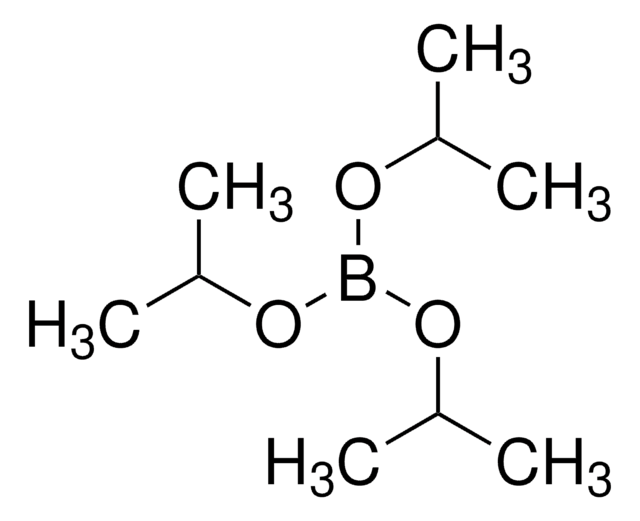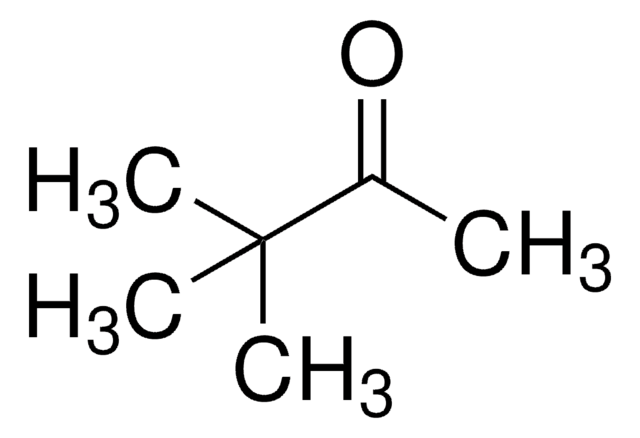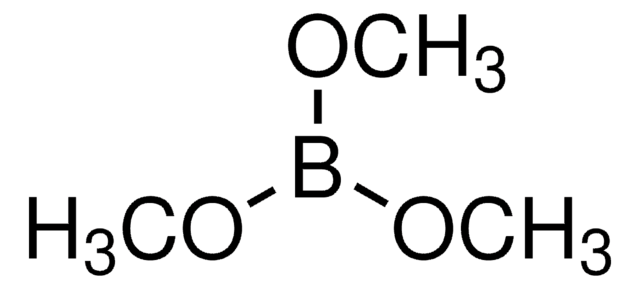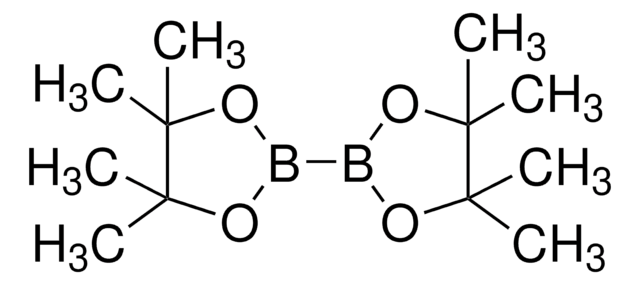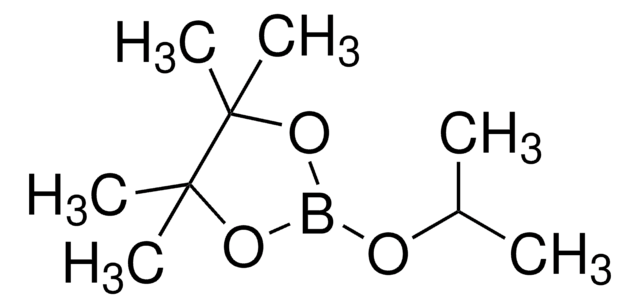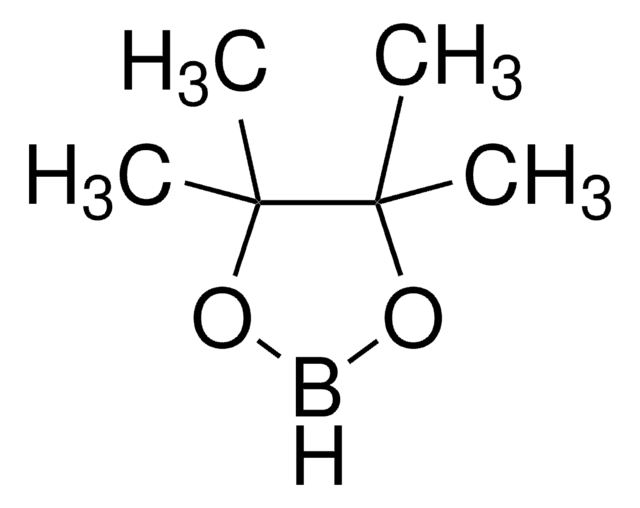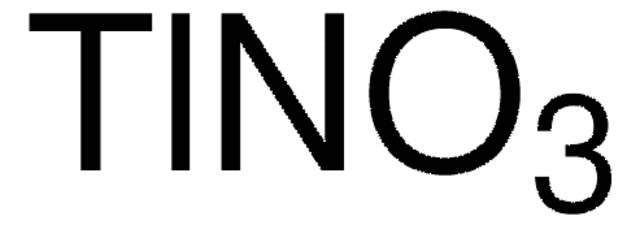221171
Pinacol
98%
Synonym(s):
2,3-Dimethyl-2,3-butanediol, Tetramethylethylene glycol
Sign Into View Organizational & Contract Pricing
All Photos(3)
About This Item
Linear Formula:
HOC(CH3)2C(CH3)2OH
CAS Number:
Molecular Weight:
118.17
Beilstein:
1340501
EC Number:
MDL number:
UNSPSC Code:
12352100
PubChem Substance ID:
NACRES:
NA.22
Recommended Products
Quality Level
Assay
98%
form
solid
bp
171-172 °C/739 mmHg (lit.)
mp
40-43 °C (lit.)
solubility
alcohol: freely soluble
diethyl ether: freely soluble
hot water: freely soluble
functional group
hydroxyl
SMILES string
CC(C)(O)C(C)(C)O
InChI
1S/C6H14O2/c1-5(2,7)6(3,4)8/h7-8H,1-4H3
InChI key
IVDFJHOHABJVEH-UHFFFAOYSA-N
Looking for similar products? Visit Product Comparison Guide
General description
The pinacol coupling reaction with the inorganic electride [Ca2N](+)·e(−) as an electron donor in organic solvents was studied.
Application
Pinacol is a 1,2-diol that can be used:
- As a ligand to prepare uranyl complexes by reacting with uranyl nitrate and acetate hydrates.
- To prepare pinacolone and 2,3-dimethyl-1,3-butadiene by typical pinacol rearrangement reaction.
- As a reactant to synthesize 4-(4,4,5,5-tetramethyl-1,3,2-bioxaborolan-2-yl)benzoic acid, which is used to prepare derivatives of 4-acetoxy-3-phenylbenzaldehyde.
Storage Class Code
11 - Combustible Solids
WGK
WGK 2
Flash Point(F)
170.6 °F - closed cup
Flash Point(C)
77 °C - closed cup
Personal Protective Equipment
dust mask type N95 (US), Eyeshields, Gloves
Choose from one of the most recent versions:
Already Own This Product?
Find documentation for the products that you have recently purchased in the Document Library.
Uranyl complexes with 1, 2-diols and tetrahydrofurfuryl alcohols
Villiers C, et al.
Polyhedron, 46(1), 133-138 (2012)
Ye Ji Kim et al.
Chemical communications (Cambridge, England), 50(37), 4791-4794 (2014-04-02)
The scalable pinacol coupling reaction is realized utilizing the inorganic electride [Ca2N](+)·e(-) as an electron donor in organic solvents. The bond cleavages of the [Ca2N](+) layers by methanol play a vital role in transferring anionic electrons to electrophilic aldehydes, accompanying
Fe-substituted molecular sieves as catalysts in liquid phase pinacol rearrangement
Hsien M, et al.
J. Mol. Catal. A: Chem., 181(1-2), 189-200 (2002)
New extraction procedure for protonated polyoxometalates prepared in aqueous-organic solution and characterisation of their catalytic ability
Ueda T, et al.
Applied Catalysis A: General, 485(1-2), 181-187 (2014)
Synthesis of polymer-bound 4-acetoxy-3-phenylbenzaldehyde derivatives: applications in solid-phase organic synthesis
Kumar A, et al.
The Journal of Organic Chemistry, 71(20), 7915-7918 (2006)
Our team of scientists has experience in all areas of research including Life Science, Material Science, Chemical Synthesis, Chromatography, Analytical and many others.
Contact Technical Service